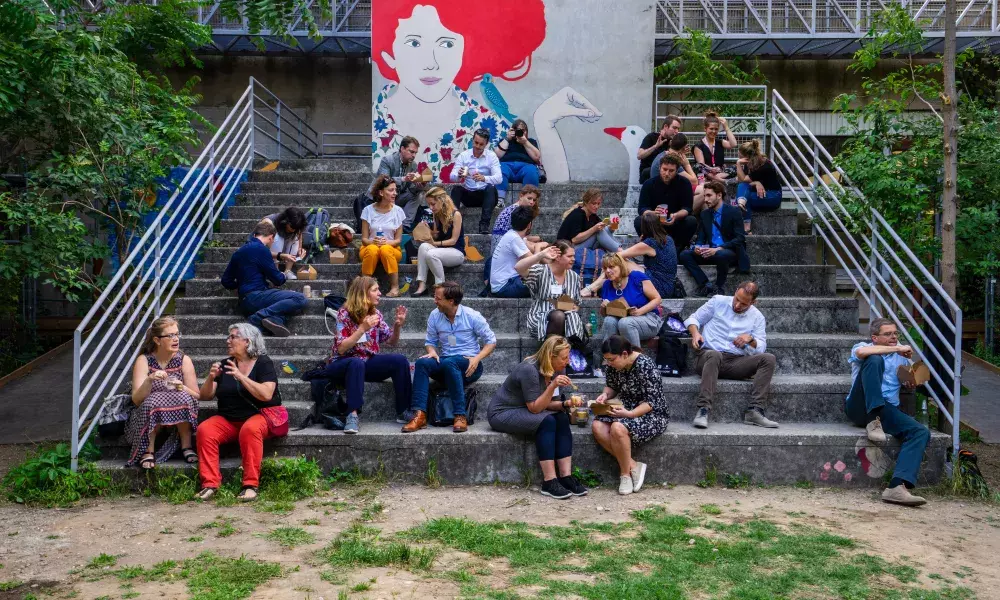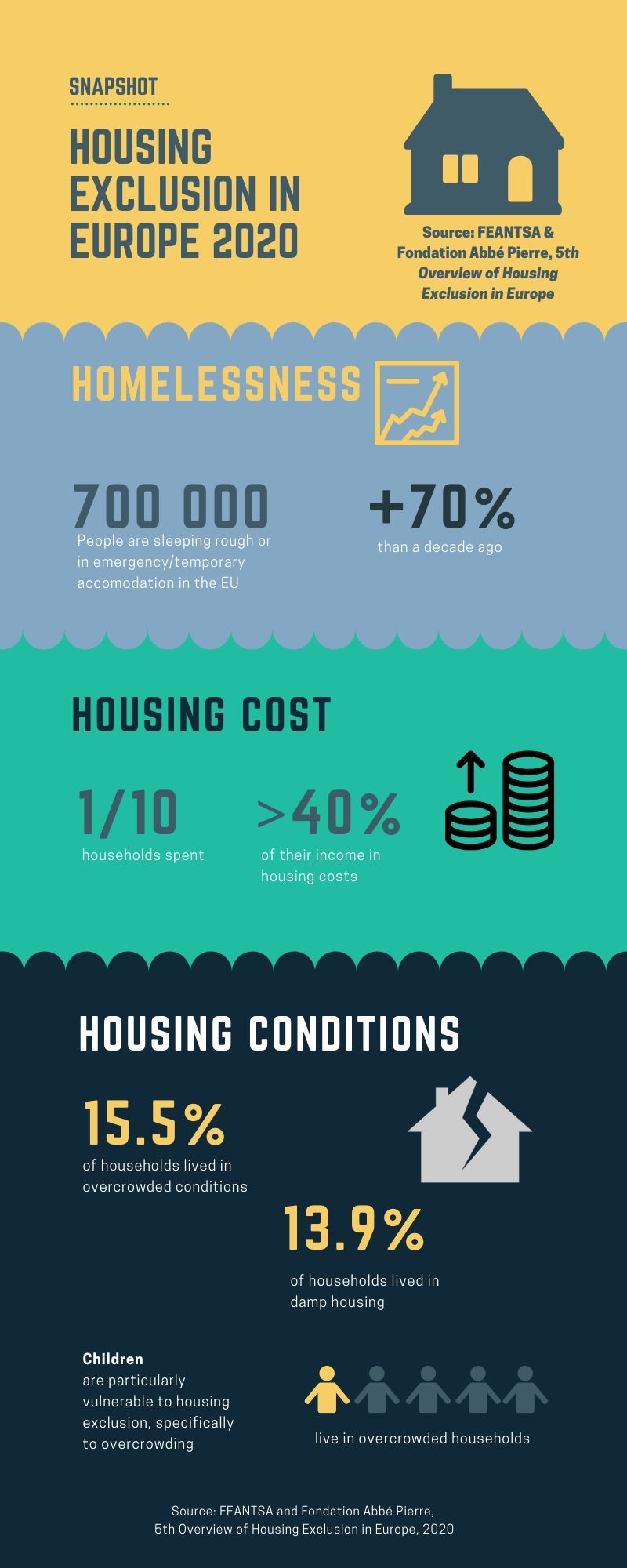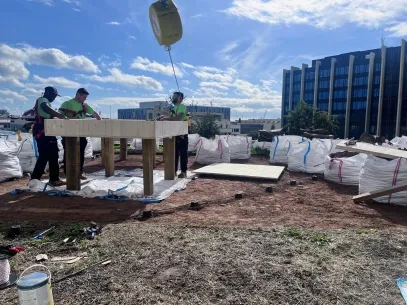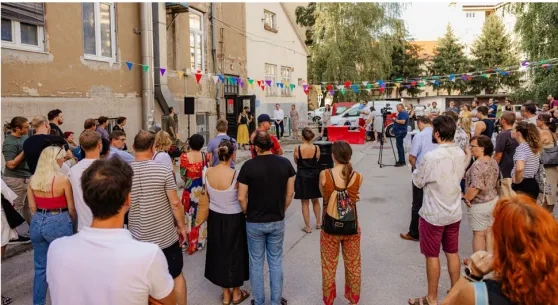Cities engaging in the right to housing Web conference #2 - No one left behind - Introductory paper

The web conference #2 - No one left behind will focus on homelessness and migration, presenting a sneak preview from the forthcoming 5th Overview of Housing Exclusion in Europe , alongside case studies of cities addressing the housing needs of homeless people and migrants.
The European Typology of Homelessness and Housing Exclusion is the most workable and widely-used framework for defining these concepts in Europe. It describes four main living situations that constitute homelessness and housing exclusion: rooflessness, houselessness, insecure housing and inadequate housing.
A Snapshot of Homelessness & Housing Exclusion in Europe in 2020

The 5th Overview of Housing Exclusion in Europe finds that at least 700,000 people are sleeping rough or in emergency/temporary accommodation on any one night in the European Union, 70% more than a decade ago.
One in ten households spent over 40% of their income on housing costs in the EU in 2018. 15.5% of households lived in overcrowded conditions, 13.9% lived in damp housing, 4% experienced severe housing deprivation, with unfit housing conditions remaining a harsh reality, particularly in Eastern European countries. Housing inequalities between poor and non-poor households are on the rise: poor households are eight times more likely to be overburdened by housing costs than non-poor households. Housing costs for poor tenants increased between 2008 and 2018 in almost all EU countries.
Children are particularly vulnerable to housing exclusion, specifically to overcrowding - 21.9% of all children concerned - and cold housing - 15.6% of all children concerned. People with an activity limitation1 , especially young people, are more likely to be overburdened by housing costs and to experience severe housing deprivation.
Homelessness & the Covid-19 Crisis
The 5th Overview was drafted during the ongoing Covid-19 crisis. This pandemic has thrown into sharp relief that fact that housing is a key determinant of health. The unprecedented health crisis has been a disproportionate threat and burden for those deprived of dignified, adequate housing. This includes all people facing homelessness and housing exclusion, a growing proportion of whom are refugees and asylum seekers.
In the context of the public health crisis, many public authorities have taken exceptional measures to protect these people. Temporary accommodation has been provided for a significant part of the homeless population in several EU countries and street homelessness in many contexts has fallen dramatically. Given a sense of urgency, political will and resources can be mobilised to end homelessness. Covid-19 could prove a turning point for public policy. Housing ministries in the Netherlands, in Wales, and officials from Brussels, Lyon, Paris, Barcelona, Madrid, and London already announced plans along these lines2 .
Homelessness and Asylum in the EU
The Fifth Overview analyses EU reception and accommodation systems and the links between asylum and homelessness. The proportion of asylum seekers and people under international protection among the homeless population has increased significantly over the last ten years, in all EU countries where data was available, including Greece, Ireland, Sweden, Denmark, Finland, Italy, the Netherlands, Germany, Spain, Belgium, the United Kingdom, and France.
The report shows that reception and accommodation systems in the EU are failing to protect vulnerable people from homelessness. Of course, the situation is very different in different contexts. Some countries at Europe’s external border, such as Greece and Italy, have been subject to exceptional pressure. As arrival countries – both first line and transit – they bear the consequences of a lack of coordination and solidarity at EU level. Once protection has been granted, people continue to struggle to access decent and affordable housing. Housing options for refugees are often limited and inadequate. Financial inaccessibility, competitiveness and discrimination – characteristics of housing markets across the European Union – are barriers to housing, with some having no choice than to turn to the black market, makeshift homes, or the streets, with all the risks and damage to fundamental rights that this entails.
Respecting procedure deadlines, adapting reception measures to people's profiles, properly identifying, and taking account of vulnerabilities, promoting integration and independence are all ways to guarantee an effective right to asylum3. With its common asylum and immigration legislation, the EU has laid the basis for harmonising reception conditions across Member States. Unfortunately, the leeway within this legislation has led, not towards top-down harmonisation, but the opposite. At every stage of the asylum process and even once protection is granted, people are denied the right to adequate housing.
The way forward in the EU
Homelessness is not a fact of life. EU governments could end homelessness by 2030, in line with the UN Sustainable Development Agenda and the European Pillar of Social Rights. Covid-19 can and should provide a turning point. The Recovery Package could help channel the necessary resources into achieving this. Homelessness can only be ended if the current failures of asylum and immigration policies are addressed. Cities, on the front line of the fight against homelessness, have a critical role to play, in partnership with regional, national and EU policymakers. FEANTSA and the Fondation Abbé Pierre recommend in their annual report that the European Commission launches an EU Framework on Ending Homelessness as part of the action plan on the European Pillar or Social Rights in 2021. This should involve a firm political commitment to ending homelessness by 2030; mechanisms to monitor homelessness and homelessness policies across the EU; mobilization of the EU budget; exchange of practices; support to scale-up Housing First and a guarantee that the right to housing be protected in the exceptional measures taken following the COVID-19 health crisis.
1 Activity limitation according to Eurostat is a dimension of health/disability capturing long-standing limitation in the performance of usual activities (due to health problems) https://ec.europa.eu/eurostat/statistics-explained/index.php/Glossary:Activity_limitation. This indicator refers to the population aged over 16 years, as ‘usual activities’ include work-related activities.
2 FEANTSA’s 2020 #hotelstohomes campaign aims to put pressure on public authorities across Europe to use the work already done in accommodating homeless people during coronavirus confinement as a springboard to providing them with long-term solutions : https://www.feantsa.org/en/campaign/2020/05/27/hotels-to-homes-the-time-for-permanent-solutions-is-now?bcParent=419
3 See also UIA’s 2019 report on Migrants and refugees integration https://www.uia-initiative.eu/sites/default/files/2019-07/Migrants%26Refugees_v5_WEB.pdf
During the conference seven city-cases will be presented for their engagement in local policies concerning the topic of this event: Ghent (BE), Odensee (DK), Glasgow (UK) Lyon (FR), Athens (GR), Thessaloniki (GR), Antwerp (BE). The cities are active in the framework of the two EU programmes UIA-URBACT.

Ghent (BE) provides a perspective on leading a network of cities working to eradicate homelessness implementing Housing First model. Ghent leads URBACT ROOF network bringing together nine cities to share and co-design action plans. The creation of this network has been supported by URBACT through the participation to the EU Urban Poverty partnership working group on Homelessness and URBACT Fighting homelessness Policy Lab,co-organised with FEANTSA in December 2018. Ghent is also active on migration inclusion and the local project “Refugee Solidarity” has been labelled good practice by URBACT. Last but not least Ghent is active in UIA with the project ICCARus employing revolving fund for the provision of affordable housing units to low income groups.
Odense (DK), a city of less than 200 000 inhabitants, is also part of the URBACT ROOF network. It has experience in implementing Housing First since 2009, when it was selected as one of the eight cities to participate in the national homeless strategy launched the same year. In 2019, the municipality of Odense and Associations active in the field of housing issued a housing guarantee for homeless people, ensuring that any homeless citizen in Odense has to wait maximum three months for a home.
Glasgow (UK) is also part of URBACT ROOF network and it is committed in implementing Housing First. The city faces a tense private rental market, with social housing owned and managed exclusively by private housing associations, which makes the implementation of affordable housing challenging. Moreover, Glasgow is the only Scottish local authority, and largest single dispersal area in the United Kingdom, to host asylum-seekers as part of the UK Home Office dispersal programme, but receives no funding for this, as all accommodation providers are private sector providers.
Lyon Métropole (FR) is active in the debate about adequate and affordable housing (cfr. Housing Europe Annual Festival 2019), presenting a newly started project Home Silk Road implemented through UIA initiative. Home Silk road is an ambitious innovative project putting vulnerable groups at the centre of a renovation process of an historical building. It aims at creating a hub for several cultural and economic activities including housing and non housing-business partners. Update on the implementation of the housing solution is available in the first project’s journal.

Athens (GR) has been active in several EU networks in relation to inclusion of migrants and refugees (e.g. Solidarity cities at Eurocities, EU Urban Agenda Partnership on Inclusion of Migrants and Refugees) and is engaged in UIA with the CURING THE LIMBO project. The UIA project focuses on housing in relation to a set of activities meant to provide skills and tools to newcomers to actively participate in the life of the city’s neighborhoods. Beneficiaries receive on-the-job training supervised by the University of Athens, which includes language learning, psychosocial support, “street law” knowledge and other basic social and soft skills. These skills are tailored to the beneficiaries’ needs and are offered in an integrated way, during which other parallel activities are also gradually introduced. Within their pilot affordable housing model, 92 lease contracts have been already si directly between refugees and property owners.
Thessaloniki (GR) has been at the forefront of the management crisis of refugee flows. The city launched its emergency response in 2015, just before the closure of the Balkan Route and the EU-Turkey common statement of March 2016. The city joined URBACT network ARRIVAL cities and worked to design with local stakeholders an action plan accommodating asylum seekers in the frame of the REACT programme. Lately, the city has joined the ROOF network.
Antwerp (BE) joined UIA with the project CURANT targeting unaccompanied minors. Once these minors reach the age of 18, they are no longer able to benefit from subsidized shelter, mandatory integration courses, enrollment in reception classes, customized trainings, nor the support from a legal guardian. The project aims at supporting young adult refugees, to benefit from affordable housing - rent being €250 a month per person -, but also a guaranteed one-on-one integration approach through trainings, skill, education, and counseling.
About this resource
The Urban Innovative Actions (UIA) is a European Union initiative that provided funding to urban areas across Europe to test new and unproven solutions to urban challenges. The initiative had a total ERDF budget of €372 million for 2014-2020.
Similar content




